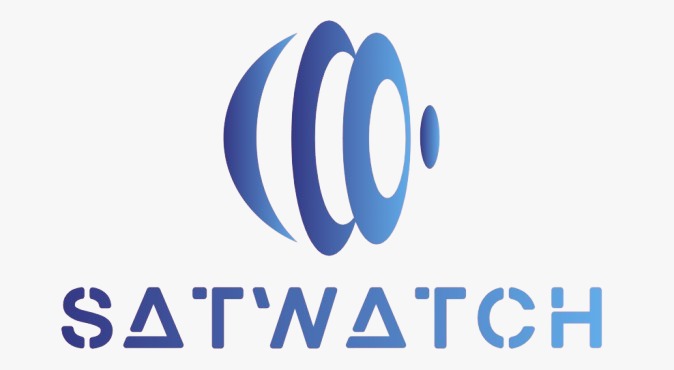Background
Research in planetary seismology is fundamentally constrained by a lack of data due to the difficulty of transferring high-resolution seismic signals back to Earth. The amount of power required to transmit data scales with distance, so the further a target body is from Earth, the more energy is required to transmit the same amount of data. Quakes are typically rare events, meaning that although large amounts of continuous data are recorded and sent back to Earth, only a small fraction of this data contains useful signals. This constraint is especially important as seismologists will likely be sharing the lander with science teams from other disciplines who have different objectives and instruments, some of which may be transferring even larger amounts of data to Earth. Consequently, data is recorded at lower resolution or with fewer instruments than might be optimal to achieve the desired science.
A potential solution for this issue is to run algorithms on a lander to differentiate seismic data from the noise, so that only the useful signals can be extracted and sent back to Earth. This is tricky to do in practice, as seismic signals on other planets tend to look different than on Earth, and the signal might be only faintly observable in the noise.
Objectives
Your challenge is to write a computer program to analyze real data from the Apollo missions and the Mars Interior Exploration using Seismic Investigations, Geodesy and Heat Transport (InSight) Lander to identify seismic events! The Example Resources section provides a data packet with continuous seismic records from these missions arranged in training and test subsets, catalogs showing when the known seismic records occur in the training data, and a Python Jupyter Notebook with helpful codes to help you get started. Your team can look at these records to understand the qualities of planetary seismic data, and then try your hand at finding all the seismic events in the test dataset. Maybe you’ll find some additional events not in the current catalogs!
How might you tackle this challenge? Will you build an algorithm that assesses the known data in a catalog and then apply the algorithm to the uncatalogued data? Short-term average and long-term average ratio (STA/LTA) algorithms measure the differences in energy across short and long segments of data. With some tinkering, you could apply conventional algorithms such as STA/LTA to the data. Don’t forget to watch out for missing data and glitches, though—both of which are common for planetary data! Recently, machine learning techniques have had success in extracting seismic signals from planetary data. To facilitate these sorts of machine learning methods, which typically require lots of training data, the Python Jupyter Notebook contains an example showing how to download additional datasets of Earth seismic activity. And don’t forget to use open-source code for your project, so we can see how you approached the challenge.
Not strong with algorithm development? No problem! Feel free to just go through the data and pick out the times of the seismic events manually. Try to see how accurately you can identify the start of each seismic wave.
Potential Considerations
You may (but are not required to) consider the following:
Planetary seismic data is messy, with a low signal-to-noise ratio. You may have to do some signal processing like running high-pass filters to make your life a bit easier!
For data and resources related to this challenge, refer to the Resources tab at the top of the page. More resources may be added before the hackathon begins.

jazan
Sep 08, 2024
Seismic Detection Across the Solar System
Seismic Detection Across the Solar System
المنتج المستهدف هو نظام تحليل زلزالي باستخدام الذكاء الاصطناعي، موجه لعلماء الفضاء والجيولوجيا. يتميز بتقديم تنبؤات دقيقة حول النشاط الزلزالي على الكواكب باستخدام خوارزميات متقدمة. يجمع بيانات من أجهزة استشعار الزلازل، ثم يقوم بتحليلها لتحديد الأنماط والعلاقات بين الأنشطة الزلزالية والنشاط البركاني أو المناخي. من خلال واجهة تفاعلية، يمكن للمستخدمين استعراض بيانات الزلازل على خرائط ثلاثية الأبعاد والحصول على تقارير تحليلية تفصيلية. يوفر النظام تحليلات في الوقت الحقيقي، مما يعزز القدرة على اتخاذ قرارات مستنيرة في البحوث العلمية والاستكشافات الفضائية.
Our team needs 5 membersRequest to Join the Team |

Riyadh
Sep 08, 2024
Seismic Detection Across the Solar System
Seismic Detection Across the Solar System
فكرتنا تعتمد على الذكاء الاصطناعي والتعلم الآلي عشان نحسّن من أداء مهمات علم الزلازل على الكواكب. بنستخدم نموذج AI ندربه على البيانات الحقيقية من مهمات أبولو ومسبار InSight المريخي، بحيث يقدر الذكاء الاصطناعي يفلتر الإشارات ويفصل الضوضاء، ويحدد لنا الزلازل اللي تهمنا. هالطريقة بتقلل بشكل كبير من الطاقة المطلوبة لإرسال البيانات للأرض. الجمهور المستهدف هم وكالات الفضاء والعلماء المتخصصين في علم الزلازل. اللي يميزنا إن عندنا موقع يستقبل أي إشارة ويعطيك الإشارة بعد الفلترة مع كل التفاصيل المهمة عن الزلازل، وبنفس الوقت يعرض لك نسبة الطاقة اللي وفرناها من الفلترة قبل الإرسال، ويساعدك تتابع كفاءة المهمة بشكل مباشر.
Our team needs 2 membersRequest to Join the Team |

Riyadh
Sep 08, 2024
Seismic Detection Across the Solar System
Seismic Detection Across the Solar System
"SatWatch هو نظام رصد ومراقبة الزلازل بواسطة الأقمار الصناعية الجمهور المستهدف-الجهات الحكومية والمؤسسات العلمية مثل هيئات رصد الزلازل -وكالات الفضاء الدولية-شركات التأمين والمجتمعات المعرضة للزلازل-الباحثون والجامعات مميزات الفكرة-تقليل حجم البيانات المرسلة باستخدام الذكاء الاصطناعي لتحليل البيانات الأولية على متن الأقمار الصناعية، يتم إرسال الأحداث الهامة فقط مما يوفر الطاقة ويقلل من وقت المعالجة.-التنبؤ بالأحداث الزلزالية من خلال دمج بيانات الأقمار الصناعية مع المعلومات الزلزالية الأرضية -تحليل بيانات متعددة المصادر يعتمد النظام على مزيج من التداخل الراداري (InSAR)-والتحليل الحراري، والتغيرات في المجال المغناطيسي والجاذبية لتوفير رؤية شاملة ودقيقة حول النشاط الزلزالي. مرونة وفعالية من حيث التكلفة استخدام شبكة من الأقمار الصناعية الصغيرة (CubeSats)التي تعمل بالتنسيق مع أجهزة الاستشعار الأرضية لتوفير نظام شامل ومرن لمراقبة الزلازل. تقليل استهلاك الطاقة عبر استخدام الطاقة الشمسية وتقنيات التخزين المتطورة في الأقمار الصناعية لتحليل البيانات وإرسالها بشكل أكثر كفاءة. نوع الحل- نظام مراقبة زلزالية متعدد الطبقات يعمل بواسطة الأقمار الصناعية ويدمج بيانات من مصادر متعددة لتحليل النشاط الزلزالي الحل يستخدم تقنيات الذكاء الاصطناعي والتعلم الآلي لتحليل البيانات على متن القمر الصناعي وتحديد الأحداث المهمة ويوفر تنبيهات مبكرة للزلازل من خلال مراقبة التغيرات الجيولوجية والفيزيائية مما يساهم في تقليل الخسائر البشرية والمادية. تقنيات الحل-التداخل الراداري (InSAR) لقياس التغيرات في سطح الأرض بدقة باستخدام إشارات الرادار من الأقمار الصناعية. الذكاء الاصطناعي وتحليل البيانات الضخمة . التعلم الآلي. أجهزة استشعار متعددة. شبكة CubeSats. الطاقة الشمسية وتقنيات التخزين. "
Our team needs 2 membersRequest to Join the Team |